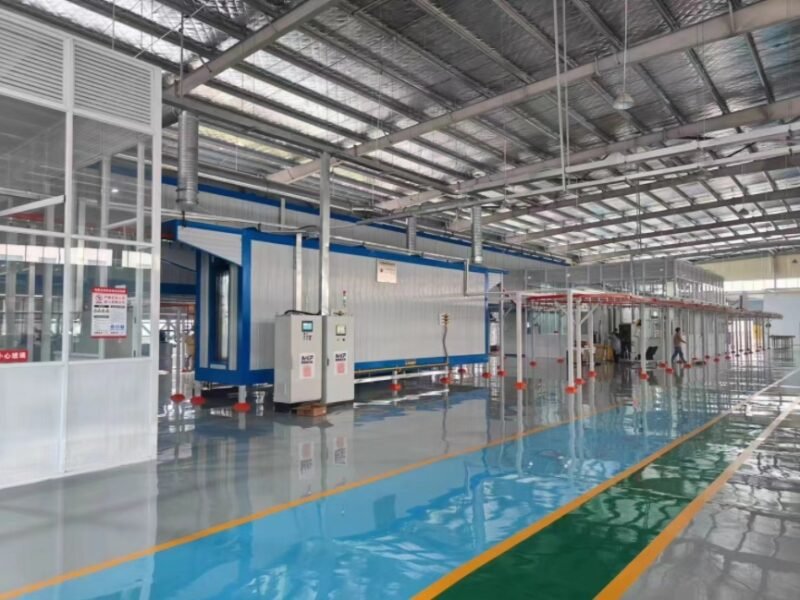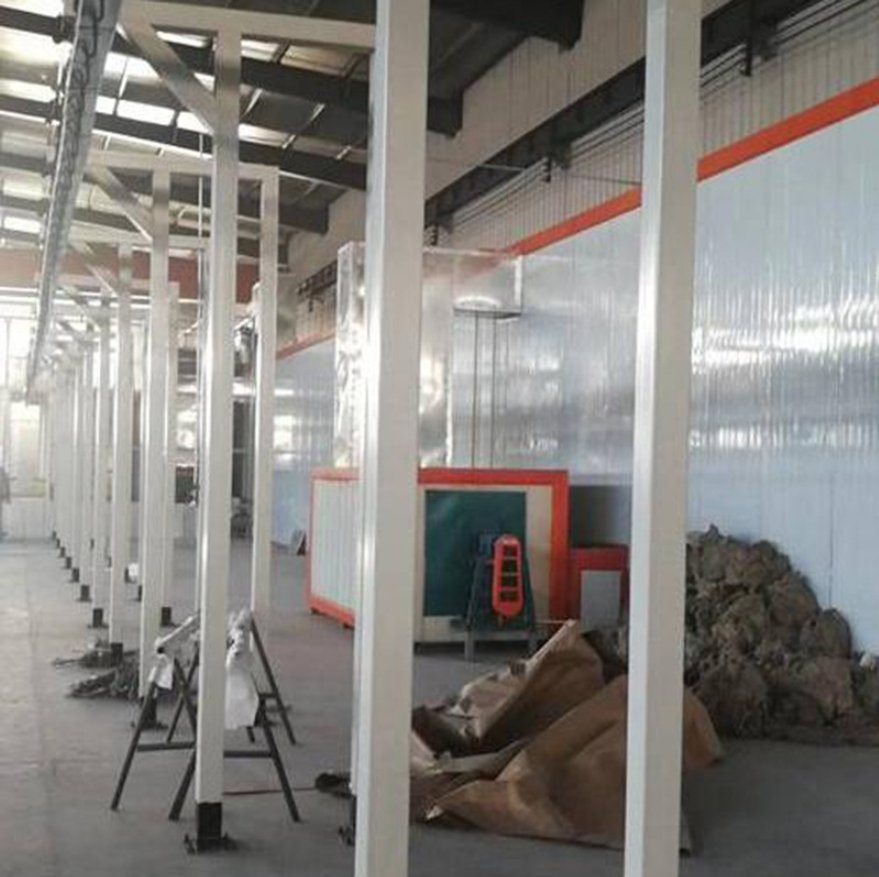
How to use the electrostatic sprayer?
How to use the electrostatic sprayer?
Using an **electrostatic sprayer** effectively requires a good understanding of the equipment, the material being sprayed, and the correct application techniques. Below is a step-by-step guide on how to use an electrostatic sprayer, with a focus on the common **powder coating** systems (electrostatic powder spraying), though the principles can apply to other types of electrostatic spraying, such as liquid coatings or disinfectants.
—
### **1. Understand the Components of the Electrostatic Sprayer**
First, get familiar with the main components of the electrostatic sprayer:
– **Spray Gun (Electrostatic Spray Gun):** This is the handheld or robotic device that applies the coating material (powder or liquid). It uses an electrical charge to attract particles to the object being sprayed.
– **Powder Feed System (for powder coating):** This system delivers the powder material to the spray gun. It may include a hopper, air fluidized bed, or a closed-loop system.
– **Air Compressor:** Provides the airflow needed to propel the powder through the spray gun.
– **Grounding System:** Ensures the object being coated is grounded to facilitate the attraction of charged particles to the surface.
– **Control Unit:** This unit regulates the settings on the spray gun, including voltage, air pressure, and spray patterns.
—
### **2. Set Up the Work Area**
Before starting, ensure your workspace is safe and well-organized:
– **Clean the Area:** Ensure the area is free from dust, dirt, and any other contaminants that may affect the quality of the coating.
– **Ventilation:** Make sure the area is well-ventilated to disperse any fine particles in the air (for powder coating, consider using an extraction or exhaust system).
– **Grounding:** Ensure both the object to be sprayed and the equipment are properly grounded. This will help the electrostatic charge to effectively attract the powder to the object. This is a key step to prevent dust from settling unevenly or causing waste.
– **Safety Equipment:** Wear protective gear, such as gloves, eye protection, and a face mask, to avoid inhaling fine powder particles or being exposed to any other chemicals. Use fire-resistant clothing in case of flammable powder applications.
—
### **3. Prepare the Electrostatic Sprayer**
#### **For Powder Coating Systems:**
– **Powder Loading:** Load the powder coating material into the powder feed hopper or fluidized bed. The powder should be free of moisture and clumps to ensure smooth operation.
– **Adjust the Settings:** Use the control panel or spray gun settings to adjust:
– **Voltage:** Typically, electrostatic powder sprayers use a negative charge on the spray gun. Adjust the voltage to match the coating material and the object being coated. Higher voltage generally improves powder adhesion.
– **Air Pressure:** Adjust the air pressure to control the flow and atomization of the powder. Too high air pressure may result in excessive overspray; too low may result in poor powder transfer.
– **Spray Pattern:** Adjust the spray pattern (e.g., round or fan-shaped) depending on the shape and size of the object.
#### **For Liquid Coatings or Disinfectants:**
– **Load the Liquid:** Fill the tank or container with the desired liquid (paint, disinfectant, or other coatings).
– **Adjust Flow Rate:** Set the desired flow rate based on the application requirements. This may involve adjusting the flow control knob or valve on the sprayer.
– **Adjust the Voltage:** Depending on the type of electrostatic sprayer, the voltage can be adjusted to help charge the liquid droplets for optimal surface adhesion.
—
### **4. Begin Spraying**
#### **Powder Coating:**
– **Start Spraying:** Hold the electrostatic spray gun approximately 6–12 inches (15–30 cm) from the object to ensure even coverage. Begin by spraying a light, even coat.
– **Move in Smooth, Steady Strokes:** Move the spray gun in a smooth, consistent motion, covering the entire surface of the object. Use a back-and-forth motion, ensuring you cover all areas without overlapping too much.
– **Avoid Over-Spraying:** Keep the nozzle at a consistent distance from the object to avoid excessive powder buildup, which may lead to uneven coating.
– **Adjust as Needed:** If you notice areas that are not adhering well, you may need to adjust the voltage, air pressure, or spray distance.
#### **Liquid Coating or Disinfecting:**
– **Spray in Passes:** Move the spray gun evenly over the surface in overlapping passes. Ensure that the spray is not too concentrated in one spot.
– **Monitor the Charge:** For liquid applications, ensure the charged droplets are attracted to the surface for even and efficient coverage. The electrostatic charge helps reduce overspray and waste by attracting the liquid to the object.
– **Adjust Flow for Coverage:** Use the appropriate spray pattern and flow rate for the specific task, such as disinfecting surfaces, painting, or applying coatings.
—
### **5. Post-Spraying Process**
Once you’ve finished spraying:
– **Check for Coverage:** Inspect the object for uniform coverage. If there are any missed spots, go over them with the sprayer as needed.
– **Curing (for Powder Coating):**
– After powder spraying, the object typically needs to go through a **curing oven** to harden and set the coating. Set the curing temperature and time according to the manufacturer’s specifications (typically between 160°C and 200°C, depending on the powder type).
– Ensure that the powder is fully cured to avoid issues with durability or adhesion.
– **Clean the Equipment:**
– **For Powder Coating Sprayers:** Clean the spray gun and powder feed system after each use to prevent clogging. Use a vacuum or cleaning brush to remove any residual powder. Some systems may also include an automatic cleaning function.
– **For Liquid Sprayers:** Clean the sprayer thoroughly with the appropriate cleaning solvent to avoid clogging, especially when switching between different liquids or colors.
—
### **6. Troubleshooting Common Issues**
– **Poor Powder Adhesion:** If the powder is not adhering properly, check the grounding of the object and spray gun, increase the voltage slightly, or ensure the surface is clean and free from oils or contaminants.
– **Excessive Overspray:** If there’s too much powder overspray, reduce the air pressure, adjust the voltage, or increase the distance between the spray gun and the object.
– **Clogging:** If the powder or liquid is clogging the nozzle, ensure the spray gun is clean, and check the powder or liquid for clumps or contamination. Use the recommended cleaning procedures.
—
### **7. Follow Safety and Maintenance Guidelines**
– Always adhere to the **manufacturer’s instructions** for both operation and maintenance.
– Regularly **inspect and maintain** the electrostatic sprayer to ensure it’s functioning properly. This includes checking the voltage, air pressure settings, and cleaning the equipment as required.
– Ensure the area is always **properly ventilated** to reduce the accumulation of powder or fumes in the air.
—
### **Conclusion**
Using an electrostatic sprayer correctly involves a combination of proper equipment setup, technique, and safety precautions. By following these steps, you can achieve consistent, high-quality coatings (whether powder or liquid) while minimizing waste and improving the efficiency of your application. Proper maintenance and regular checks will help extend the life of the equipment and ensure a safe working environment.
electrostatic powder coating method
electrostatic powder coating paint
electrostatic powder coating pdf
electrostatic powder coating plant
electrostatic powder coating principle
electrostatic powder coating principles and pharmaceutical applications
electrostatic powder coating problems
electrostatic powder coating process pdf
electrostatic powder coating ptfe
electrostatic powder coating services
electrostatic powder coating site youtube.com

